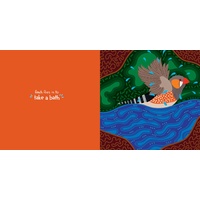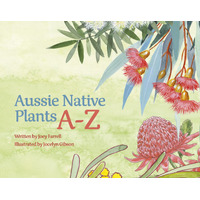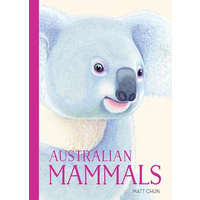This boldly illustrated work from Indigenous creator Helen Milroy celebrates the birds in our backyards. From laughing kookaburras to prancing mudlarks, this is a fun and lively read for the very young.
Hardback 19.5 x19.5cm
Teaching Notes
YEAR LEVEL: K–3
CROSS-CURRICULUM PRIORITY
Aboriginal and Torres Strait Islander histories and cultures; Sustainability
ABOUT THE BOOK
This boldly illustrated work from Indigenous creator Helen Milroy celebrates the birds in our backyards. From laughing kookaburras to prancing mudlarks, this is a fun and lively read for the very young.
ABOUT THE AUTHOR
Dr Helen Milroy is a descendant of the Palyku people of the Pilbara region of Western Australia. She was born and educated in Perth. Helen has always had a passionate interest in health and wellbeing, especially for children. Australia’s first Indigenous doctor, Helen studied medicine at the University of Western Australia and is currently Professor of Child and Adolescent Psychiatry at UWA, Honorary Research Fellow at Telethon Kids Institute and a Commissioner with the National Mental Health Commission. Helen was recently appointed as the AFL’s first Indigenous Commissioner. Her books for children include Wombat, Mudlark and Other Stories (2019) and Backyard Birds (2020).
THEMES
• Birds • Australian wildlife • Observing nature • Celebrating nature • Connecting with your environment
AUSTRALIAN CURRICULUM OUTCOMES
K–3 English K–3 Biological Sciences K–3 Visual Art
USEFUL WEBSITES
• Australian Museum – bird factsheets:
• Australian Museum – Birds in Backyards top 30 urban birds:
• Birdlife Australia – find a bird:
• Atlas of Living Australia – Exercises: Foundation to Year 2:
CLASSROOM IDEAS
Discussion questions
1. The book mentions ten different types of birds (see the last page for a picture of all ten). Which of these birds have you seen before? Where did you see them? Do you remember what they were doing and how they behaved?
2. What sound does each of these birds make? Go through the book together as a class and make each bird’s sound.
3. What other birds have you seen or heard in your backyard or around your area? Do any birds prefer to live by the water? Do any birds prefer to come out at night?
4. Some birds’ names reveal something about their behaviour. Why are twenty-eights called that? What gives the willy wagtail its name?
5. A bird has more than one name. For example, the black-and-white bird on page 7 has the common name of Australian magpie. It has the scientific name of Gymnorhina tibicen. And it has the Indigenous name of koolbardi (this name is in the Noongar language of the Noongar people from the south-west of Western Australia). Some birds have several common names and several Indigenous names. What Indigenous languages are spoken in the area where you live? Find out the names of your area’s local birds in these languages.
6. Three types of parrots appear in Backyard Birds. Can you name all three?
7. In Australia we are lucky to have many birds from the parrot family called ‘cockatoos’. All cockatoos have a crest, which is a showy tuft of feathers on top of their heads (which they can raise or lower). Can you find the two types of cockatoo in Backyard Birds?
8. What illustration style has Helen Milroy used in the book? Do any colours repeat in all the illustrations?
9. Which is your favourite illustration in the book and why?
10. What can we do to attract birds to our backyards in a safe way? Identify what attracts birds to visit, as well as what they like to eat when they are there. Useful Link
Biological sciences
1. To identify birds, we observe the way they look, the sounds they make and the way they behave.
a. Choose a bird from Backyard Birds and write down as many of its features as possible (e.g. for the magpie, you might write: large; glossy black and white feathers; pale beak; has a special warbling song; sometimes sings at night; swoops people, especially on bicycles; etc.).
b. Using your list, play a game of ‘Guess the Bird’ in pairs. Without naming your bird, take turns reading your list of descriptions while your partner tries to guess your chosen bird.
2. Choose one bird from the book and create a factsheet with the following information: scientific name, common name(s), Indigenous name(s), physical description, habitat, diet, life cycle, conservation status, interesting facts. Include a reference list of all sources used in your research.
3. Many bird species in Australia are listed as threatened or even endangered. What are the causes for this? As a class, discuss the threats to our native birds, such as clearing of native vegetation, loss of habitat, feral cats and plastic pollution. What can we do to help? Useful link
Visual art
1. Create a spread of your own for the book Backyard Birds. This will include a short line on the lefthand page that describes the bird’s action, and a drawing on the right-hand side that shows the bird. These can be hung up in the classroom in a class display of the students’ work.
2. What is your favourite bird? Research this bird’s habitat, then create a drawing of the bird in its natural habitat Useful link
Creative writing
1. Write a story on an Australian native bird of your choice. Make sure the bird is the main character of your story. What kind of personality does it have? What does it like to do? What adventures does it go on?
(252_041_22)
| SKU | 252_041_22 |
Be the first to review this product!
Help other shoppers by writing reviews for products you have purchased.
Calculate Shipping
Metro Postage - $15.00
rural and regional surcharge may be applied additionally.
Rural & PO Box Postage - $19.50
Express Post 5kg - $28.00
Delivery Australia Wide Express Post Large (5kg) satchels are are designed for items weighing up to 5kg. Dimensions: 435 x 510mm.
Sendle 25kg Postage Metro Areas - $36.95
Delivery Australia Wide
Click & Collect - $0.00
Collect from warehouse U6/73 Walters Drive Osborne Park. Call to arrange time 0409 799 144
We also recommend

Eastern Rosella Hand Puppet
$68.00
You may also like

Crochet Baby Aussie Bird Set
$150.00





















